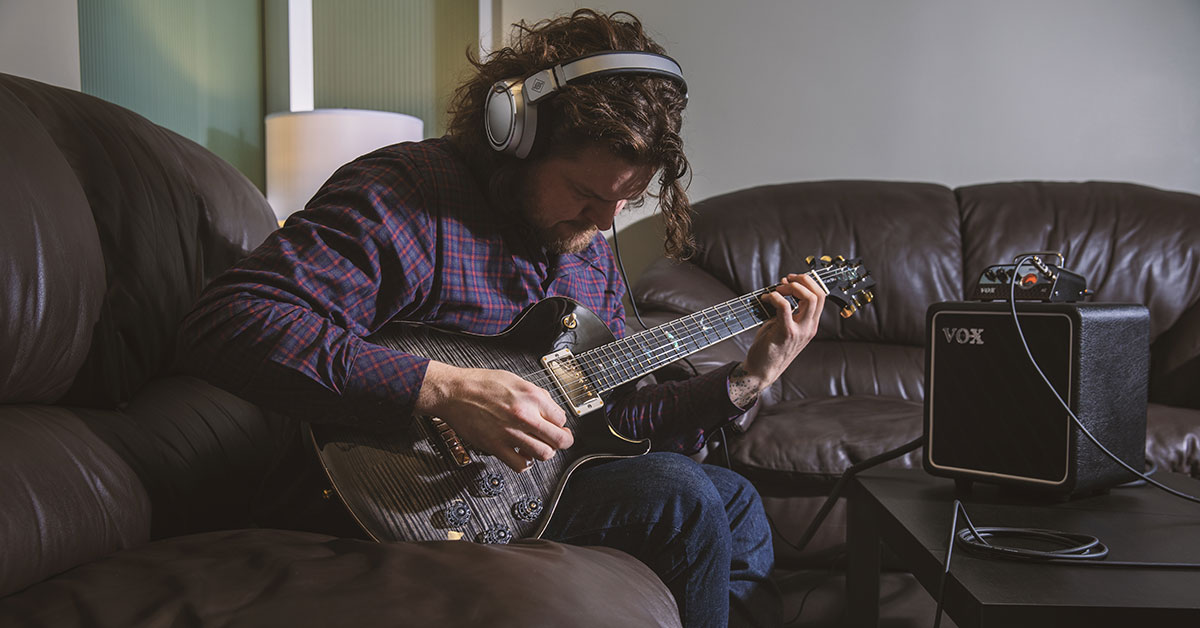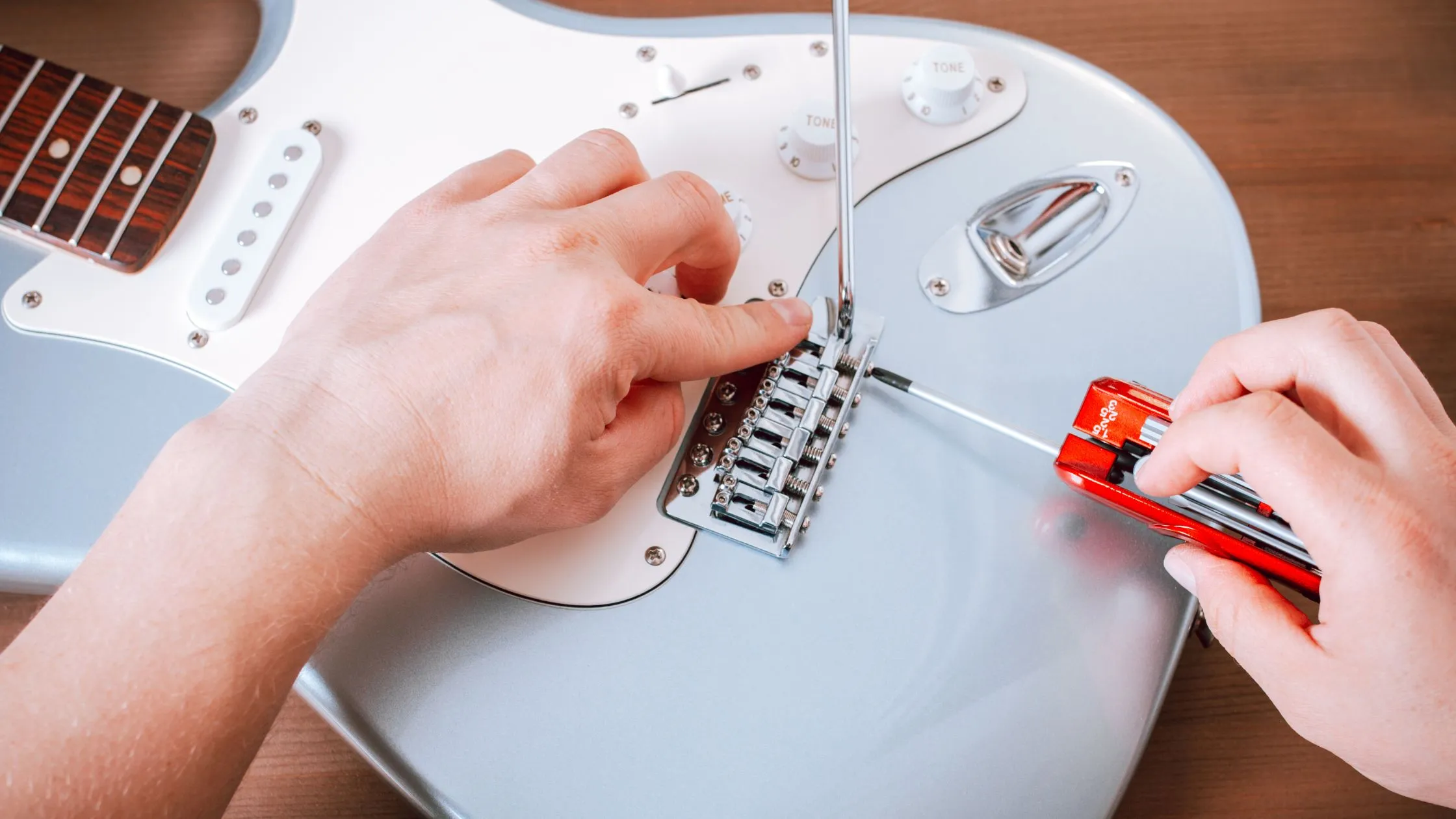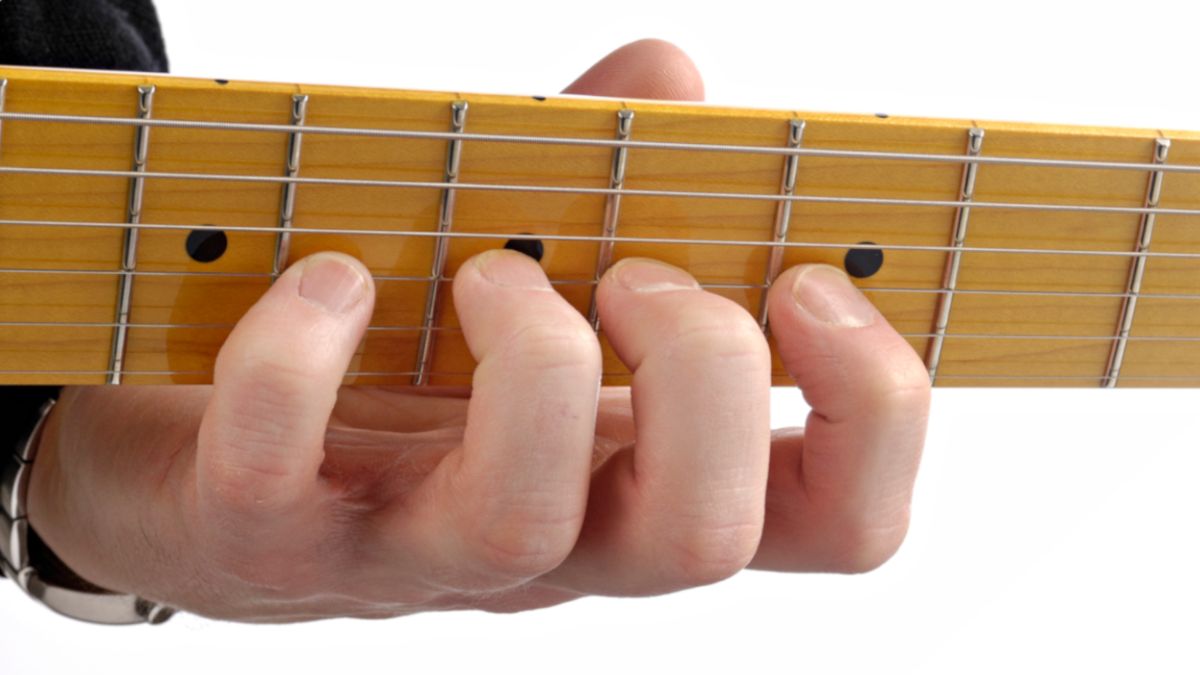Introduction
So, you've just picked up an electric guitar and you're eager to start playing like a pro. Whether you're a complete beginner or have some experience under your belt, practicing is the key to unlocking your full potential as a guitarist. But where do you start? How do you structure your practice sessions to ensure steady progress and maintain motivation? In this guide, we'll walk you through the essential steps to practice electric guitar effectively and efficiently.
Learning to play the electric guitar is an exciting journey that can lead to a lifetime of musical enjoyment and fulfillment. It's a versatile instrument that can be used in various genres, from rock and metal to blues and jazz. The electric guitar offers a wide range of sounds and effects, making it a thrilling instrument to master. However, like any skill worth pursuing, it requires dedication, patience, and, most importantly, consistent practice.
In this comprehensive guide, we'll cover everything from setting up your practice space to mastering scales and chords, refining your techniques, and perfecting your favorite songs. Additionally, we'll delve into the importance of using backing tracks, recording yourself, and setting achievable goals to keep your practice sessions engaging and productive.
Whether you aspire to shred like your guitar heroes, write your own music, or simply jam with friends, this guide will equip you with the knowledge and strategies to make the most of your practice time. So, grab your guitar, plug in your amp, and let's embark on this exhilarating journey to becoming a proficient electric guitarist!
Setting Up Your Practice Space
Creating an inviting and conducive practice space is crucial for maintaining focus and motivation during your guitar sessions. Whether you have a dedicated music room or a corner of your bedroom, here are some essential tips for setting up your practice space:
- Comfortable Seating: Invest in a comfortable chair or stool that allows you to maintain a good playing posture and minimizes strain during long practice sessions.
- Good Lighting: Ensure that your practice area is well-lit to prevent eye strain and create a vibrant, energizing atmosphere.
- Organized Equipment: Keep your guitar, amplifier, cables, and other accessories neatly organized and easily accessible to streamline your practice routine.
- Inspiring Decor: Surround yourself with inspiring artwork, posters of your favorite musicians, and other elements that ignite your passion for music.
- Minimal Distractions: Minimize distractions such as electronic devices, excessive clutter, or noise from outside sources to maintain a focused practice environment.
By curating a space that is comfortable, visually appealing, and free from distractions, you can create an environment that encourages regular practice and sparks creativity. Remember, your practice space should be a reflection of your love for music and a place where you can fully immerse yourself in your guitar journey.
Warm-Up Exercises
Before diving into intense practice sessions, it’s essential to warm up your fingers, wrists, and arms to prevent injuries and optimize your playing ability. Warm-up exercises not only prepare your muscles for the demands of guitar playing but also improve your dexterity and overall performance. Here are some effective warm-up exercises to incorporate into your practice routine:
- Finger Flexes: Start by gently stretching and flexing your fingers to increase blood flow and loosen up your hand muscles. Perform individual finger stretches and circular motions to promote flexibility.
- Chromatic Exercises: Practice chromatic runs and patterns across the fretboard to enhance finger coordination and agility. This exercise also familiarizes you with different hand positions and strengthens your muscle memory.
- Finger Strength Builders: Utilize finger-strengthening tools such as grip exercisers or stress balls to enhance the strength and endurance of your fingers, especially if you’re a beginner.
- Basic Chord Progressions: Warm up by playing through common chord progressions at a relaxed pace, focusing on clean fretting and strumming techniques. This helps to limber up your fingers and familiarize yourself with chord transitions.
- Arpeggio Patterns: Practice arpeggio patterns to warm up your picking hand and improve precision in plucking individual notes within chords. This exercise also aids in developing a smooth and controlled picking technique.
Integrating these warm-up exercises into your daily practice routine not only prepares your body for playing but also serves as an opportunity to reinforce fundamental techniques. By consistently incorporating warm-up exercises, you’ll notice improved finger agility, reduced muscle tension, and a more fluid and confident playing style.
Learning Scales and Chords
Mastering scales and chords is fundamental to becoming a proficient electric guitarist. Scales form the foundation for melodies and solos, while chords are the building blocks of rhythm and harmony. Here’s how you can effectively approach learning scales and chords:
- Understanding Scale Theory: Familiarize yourself with the theory behind scales, including major and minor scales, pentatonic scales, and modes. Grasping the intervals and patterns within scales will deepen your understanding of music theory and improvisation.
- Scale Exercises: Dedicate time to practicing scales across the fretboard, focusing on clean and even note articulation. Utilize scale diagrams and backing tracks to enhance your scale proficiency and develop a strong sense of tonality.
- Chord Progressions: Learn common chord progressions and their variations to build a repertoire of versatile chord voicings. Understanding chord progressions is essential for songwriting, improvisation, and accompanying other musicians.
- Barre Chord Mastery: Work on mastering barre chords, as they provide the foundation for playing a wide range of songs and styles. Practice transitioning between barre chord shapes and incorporating them into different progressions.
- Ear Training: Train your ear to recognize chord qualities, intervals, and chord progressions by regularly practicing ear training exercises and transcribing songs by ear. This skill is invaluable for improvisation and playing by ear.
Consistent and focused practice of scales and chords will not only enhance your technical proficiency but also expand your musical vocabulary and improvisational skills. As you delve deeper into scale and chord theory, you’ll gain the confidence to explore complex musical compositions and express yourself fluently through your instrument.
Practicing Techniques
Developing solid technical skills is essential for mastering the electric guitar. By incorporating effective practicing techniques into your routine, you can refine your playing abilities and elevate your overall musicianship. Here are some strategies to optimize your practice sessions:
- Focus on Precision: Practice playing each note and chord with precision, paying attention to clean fretting, accurate picking, and consistent timing. Start at a slow tempo and gradually increase speed as you build confidence.
- Isolate Challenging Passages: Identify challenging passages within songs or exercises and isolate them for focused practice. Break down complex phrases into smaller segments and gradually integrate them into the complete piece.
- Utilize Metronome Practice: Incorporate a metronome into your practice routine to develop a strong sense of rhythm and timing. Gradually increase the tempo as you become more comfortable with each passage or exercise.
- Alternate Picking Exercises: Dedicate time to alternate picking exercises to enhance speed, accuracy, and coordination between your picking hand and fretting hand. Consistent practice of alternate picking patterns will lead to smoother and more controlled playing.
- Bend and Vibrato Practice: Work on perfecting your bending and vibrato techniques to add expressiveness to your playing. Focus on achieving pitch accuracy and controlled vibrato to infuse your solos and melodies with emotion.
By integrating these practicing techniques into your daily routine, you’ll notice significant improvements in your technical prowess and overall performance. Consistency, patience, and deliberate practice are key elements in refining your techniques and pushing the boundaries of your guitar playing abilities.
Working on Songs
Learning and mastering songs is a pivotal aspect of your electric guitar practice. It not only allows you to apply the techniques and theory you’ve learned but also provides a sense of accomplishment and enjoyment. Here’s how you can effectively approach working on songs:
- Song Selection: Choose songs that align with your current skill level and musical preferences. Starting with simpler songs and gradually progressing to more complex pieces will keep you motivated and engaged.
- Break It Down: Break the song into sections, such as verses, choruses, and solos, and practice each part separately before integrating them into the full arrangement. This approach enhances your understanding of song structures and facilitates smoother transitions.
- Emulate the Original Recording: Listen closely to the original recording of the song to capture nuances in tone, dynamics, and phrasing. Emulating the original performance adds authenticity to your rendition and helps you internalize the musical nuances.
- Focus on Expression: Pay attention to the emotional expression within the song and strive to convey the intended mood and energy through your playing. Utilize techniques such as dynamics, vibrato, and articulation to infuse your performance with depth and feeling.
- Play Along with the Recording: Practice playing along with the original recording or backing tracks to develop a sense of ensemble playing and improve your ability to stay in time with the music.
Working on songs not only enhances your technical skills but also nurtures your musicality and performance abilities. As you tackle a diverse repertoire of songs, you’ll gain valuable insights into various playing styles, genres, and songwriting approaches, ultimately enriching your musical experience and broadening your creative horizons.
Using Backing Tracks
Backing tracks are invaluable tools for honing your improvisation, timing, and ensemble skills as an electric guitarist. They provide a dynamic and immersive musical backdrop for you to explore different playing styles, experiment with soloing, and refine your rhythmic precision. Here’s how you can effectively utilize backing tracks in your practice sessions:
- Genre Exploration: Utilize backing tracks across various genres, such as blues, rock, jazz, and funk, to diversify your playing and expand your musical horizons. Each genre presents unique rhythmic and harmonic challenges, allowing you to develop versatility as a guitarist.
- Improvisation Practice: Use backing tracks as a platform for improvisation, allowing you to explore melodic ideas, scales, and phrasing in a musical context. Improvising over diverse backing tracks enhances your creativity and spontaneity as a guitarist.
- Rhythmic Development: Playing along with backing tracks improves your sense of timing, groove, and interaction with a rhythmic accompaniment. It enhances your ability to lock in with a band or recorded music, a crucial skill for live performances and ensemble playing.
- Soloing Techniques: Experiment with soloing over backing tracks to develop your soloing techniques, including bending, vibrato, and articulation. This hands-on approach allows you to refine your phrasing and melodic expression in a musical context.
- Performance Simulation: Using backing tracks simulates the experience of playing in a band or ensemble, providing a realistic context for refining your stage presence, dynamics, and interaction with other instruments.
By integrating backing tracks into your practice routine, you’ll enhance your musicality, improvisational skills, and overall confidence as a guitarist. The immersive and interactive nature of backing tracks creates a dynamic practice environment that fosters creativity, adaptability, and a deeper understanding of musical collaboration.
Recording Yourself
Recording yourself during practice sessions is a powerful tool for self-assessment, progress tracking, and artistic development as an electric guitarist. Whether you’re a beginner or an experienced player, integrating recording into your practice routine offers a myriad of benefits and insights into your playing. Here’s how recording yourself can elevate your musical journey:
- Performance Evaluation: Recording allows you to objectively assess your playing, identifying areas for improvement in technique, timing, and expression. It provides a clear perspective on your strengths and areas that require further attention.
- Progress Monitoring: Regular recordings serve as a progress log, enabling you to track your development over time. Comparing recordings from different practice sessions provides tangible evidence of your growth as a guitarist.
- Self-Critique and Reflection: Listening back to your recordings encourages self-critique and reflection, empowering you to pinpoint specific areas for refinement and set targeted practice goals.
- Artistic Exploration: Recording sessions offer a platform for artistic exploration, allowing you to experiment with different tones, effects, and playing styles. It fosters creativity and encourages you to push the boundaries of your musical expression.
- Preparation for Performance: Recording yourself simulates the pressure of a live performance, helping you adapt to playing under scrutiny and enhancing your ability to deliver polished and confident performances.
By embracing the practice of recording yourself, you’ll gain valuable insights into your playing, nurture a discerning ear, and cultivate a proactive approach to refining your musical craft. The process of self-recording not only sharpens your technical abilities but also fosters a deeper connection to your musical identity and artistic aspirations.
Setting Goals
Establishing clear and achievable goals is integral to your growth and progress as an electric guitarist. By setting specific objectives and milestones, you can chart a deliberate path toward improvement and maintain motivation throughout your musical journey. Here’s how you can effectively set and pursue meaningful goals in your guitar practice:
- Define Your Objectives: Identify areas of focus, such as mastering a particular technique, learning specific songs, or delving into music theory. Clearly defining your goals provides a sense of direction and purpose in your practice sessions.
- Set Measurable Targets: Establish measurable milestones, such as mastering a challenging solo, increasing your practice duration, or achieving a certain speed in a technical exercise. Measurable targets allow you to track your progress and celebrate incremental achievements.
- Create a Practice Schedule: Develop a structured practice schedule that aligns with your goals, allocating dedicated time for technical exercises, repertoire building, and creative exploration. Consistent and focused practice is key to realizing your musical aspirations.
- Adapt and Evolve: Continuously reassess and adjust your goals as you progress, allowing for flexibility and adaptation to your evolving skill set and musical interests. Embrace new challenges and opportunities for growth as you attain your initial objectives.
- Cultivate Patience and Persistence: Recognize that achieving significant milestones in guitar playing requires patience and persistence. Embrace the journey, stay committed to your goals, and celebrate the incremental victories along the way.
By integrating goal setting into your practice routine, you’ll instill a sense of purpose and direction in your musical pursuits. Clear objectives, coupled with dedicated effort and perseverance, empower you to realize your full potential as a guitarist and derive greater fulfillment from your musical endeavors.
Conclusion
Congratulations on embarking on the enriching journey of mastering the electric guitar. As you’ve discovered throughout this guide, effective practice is the cornerstone of progress and proficiency in playing this versatile instrument. By setting up a conducive practice space, incorporating warm-up exercises, delving into scales and chords, refining your techniques, and working on songs, you’ve laid a strong foundation for your musical growth.
Additionally, the utilization of backing tracks, recording yourself, and setting meaningful goals serve as catalysts for honing your skills, fostering creativity, and maintaining a driven mindset. Each aspect of your practice routine contributes to a holistic and fulfilling guitar-playing experience, empowering you to express yourself fluently through your instrument.
Remember, the journey to mastery is a continuous and dynamic process. Embrace the challenges, celebrate your progress, and stay open to new learning opportunities. The dedication and passion you invest in your practice will undoubtedly yield rewarding results and elevate your musical abilities to new heights.
So, pick up your guitar, immerse yourself in the joy of playing, and let the music you create resonate with your unique voice. Whether you aspire to perform on stage, compose your own music, or simply enjoy the sheer pleasure of playing, your commitment to deliberate and focused practice will be the driving force behind your growth as an electric guitarist.
With each strum, chord progression, and solo, you’re not only refining your technical skills but also nurturing your artistic voice and musical identity. Embrace the process, stay inspired, and revel in the transformative power of music. Your guitar journey is a narrative waiting to unfold, and with each practice session, you’re shaping a compelling and resonant story through the strings of your electric guitar.

























